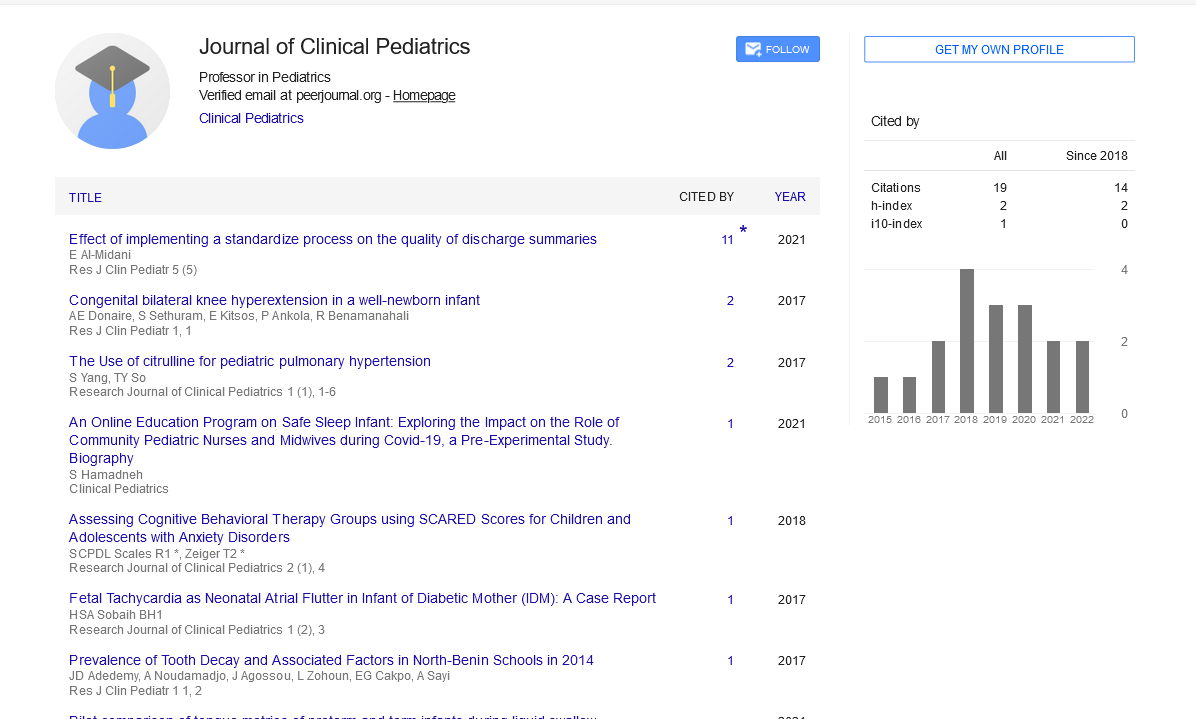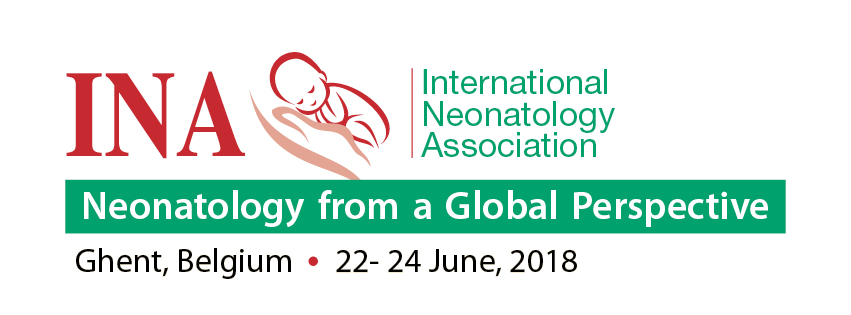Editorial, Res J Clin Pediatr Vol: 2 Issue: 2
A Research Gap in Pediatrics
Stapleton FB*
Department of Pediatrics, University of Washington, Seattle Children’s, USA
*Corresponding Author : Stapleton FB, MD
Department of Pediatrics, University of Washington, Seattle Children’s, USA
Tel: +1-206-987-2150
E-mail: bruder.stapleton@seattlechildrens.org
Received: July 20, 2018 Accepted: July 24, 2018 Published: July 31, 2018
Citation: Stapleton FB (2018) A Research Gap in Pediatrics. Res J Clin Pediatr 2:2.
Abstract
In 2012 I drew the attention of the American Pediatric Society to the striking di�?ٴerence in the demographics of children in the United States and the pediatric academic workforce when I issued a call for action to increase minority representation within the fieOd of pediatrics and named it “Mind the Gap”. Нe canyon I described between the percentage of minority children in the United States and the number of pediatricians has narrowed little since that time and the impact of the diversity gap on pediatric research remains a challenge and tremendous opportunity.
Keywords: Pediatrics;
Introduction
In 2012 I drew the attention of the American Pediatric Society to the striking difference in the demographics of children in the United States and the pediatric academic workforce when I issued a call for action to increase minority representation within the field of pediatrics and named it “Mind the Gap” [1]. The canyon I described between the percentage of minority children in the United States and the number of pediatricians has narrowed little since that time and the impact of the diversity gap on pediatric research remains a challenge and tremendous opportunity.
To consider the “Research Gap” it may be helpful to consider the multiple definitions of the word “Gap”. One definition states that a gap is “a distance between two points”. Perhaps we might review the demographic gap between of children in the United States and our pediatricians to assess the current distance. In 2016, approximately 73 million children <18 y reside in the United States, with 51.8% being non-Hispanic white children [2]. Hispanic children comprised 24.4%, African American children 14.1% and Asians 4.7% of the pediatric population. The remainder was a combination of minority children. The relative proportion of minority children within the United States is greatest and growing the youngest age groups, where Non-Hispanic white children are now a minority in children <5 years of age.
How does the composition of the U.S. Pediatric workforce compare to our children? An estimate may be made from the response of pediatricians to a 2017 Medscape survey evaluating pediatricians’ burnout, which found 66% of the respondents were white, 15% were Asian, 7% were Hispanic, 5% were Black, others 7% [3]. In comparison to 2012, the number of Asian pediatricians has grown, non-Hispanic white pediatricians have decreased and the percentage of underrepresented minority pediatricians has experienced very modest growth.
Is the wide “gap” or distance between our patients and providers likely to change soon? Unlikely, the AAMC reports that minority enrollment in US allopathic medical schools (excluding Asians and Non-Hispanic whites) has grown slightly in the past decades but remains strikingly low at less than 15% of medical school matriculants [4]. Given that approximately 10-12% of medical students chose careers in pediatrics annually, our pediatric minority ranks are not going to be ballooning in the near future. Thus the pipeline for future minority pediatric physician-scientists will also not be expanding rapidly.
What about the “gap” in the research workforce? Here another definition of “gap” comes to mind—“a lack of balance” While the total minority pediatric research workforce is unknown, the NIH intramural program has reports that 5.2% of senior scientists are underrepresented in medicine and all other clinical and PhD intramural scientists represent less than 7.55 of their representative appointment classification [5]. At least one study has suggested that minority grant applications to the NIH from PhD’s are less successful than were non-minority applicants. Canadian investigators have also suggested that gender bias may be present in Canadian grant reviews [6]. This type of bias would potentially also negatively influence African American grant applications in the US as the majority of African American medical students are women. Analyses of the memberships of major academic pediatric societies (Academic Pediatric Association, American Pediatric Society, and Association of Medical School Department Chairs) have found a very low percentage of underrepresented minorities among their members. These societies represent many of the scientists in the current pediatric academic workforce.
Another definition of the word “gap” is a difference in attitude. Often I hear the question “Is the lack of diversity in the research or clinical workforce important?” I posit that for the future of children, it absolutely is vital. Health disparities are consistently found when nearly any health outcome in children is examined. Whether one addresses the rate of prematurity, the prevalence of obesity or complications of diabetes, control of ADHD, the care children in emergency departments, the outcomes of asthma or just about any other health outcome, one finds striking racial and/or ethnic disparities. To make matters worse, the very population of minority children and families in whom these disparities occur are often not included in clinical research studies. Trust in the medical research system is already low and the current sociopolitical climate further complicates engaging minority communities in research. The ability to study health outcomes in localized geographic areas and even neighborhood can begin to identify areas of disparity, but the workforce and the system may not be ready to respond to new geographically targeted opportunities.
The imbalance in the current demographics of the pediatric clinical and research workforce does not mean that problems aren’t and can’t be addressed through rigorous research. Many non-minority physician scientists and other research scientists are committed to addressing vexing biological and clinical questions among different communities. However, to achieve the best research ideas and outcomes we must become more diverse. As an op-ed in the New York Times states, “Diversity improves the way people think. By disrupting conformity, racial and ethnic diversity prompts people to scrutinize facts, think more deeply and develop their own opinions.” [7]. The partnership between the research scientists and the communities who can benefit from research can only be truly consummated when we pediatricianscientists better reflect our society.
Another definition of the word, “gap” is “a passage”. How do we move into the future? It requires efforts at every level of the pipeline. We must promote outstanding educational systems for all of our children, with an emphasis on science, technology, engineering and math. Promoting diversity and inclusion in our communities, K-8, high schools, undergraduates, medical schools and postgraduate programs must be a priority for the future health of children. As pediatricians committed to the health of children, we have the opportunity to advocate and participate in developing this pipeline as advocates for strong scientific education programs in our communities. We also have a more personal opportunity to serve as a role model for what is best in pediatric medicine by providing the most compassionate and empathic care to our patients and families [8]. This opportunity to potentially motivate out young, yet undifferentiated patients to pursue careers in medicine or science is not just an opportunity, it is a responsibility. We need a “passage” to overcome the “distance” in our current research workforce and research agenda in order to pursue the best health for children.
References
- Stapleton FB (2012)Mind the Gap: 2012 Presidential Address of the American Pediatric Society. Pediatr Res 72:441-443.
- US Census Bureau (2012-2016) American Community Survey 5-Year Estimates, American Fact Finder, USA.
- Peckham C, Grisham S (2017) Medscape Lifestyle Report 2017: Race and Ethnicity, Bias and burnout, Medscape, New York, USA.
- Jaschik S (2017)Diversity and Medical School Admissions, Inside Higher Ed, Washington DC, USA.
- National Institute of Health (2017) Intramural research program personnel demographics (End FY-16), Bethesda, Maryland, USA.
- Ginther DK, Schaffer WT, Schnell J, Massimore B, Liu F et al (2011)Ethnicity and HIH Research Awards. Science 6045: 1015-1019.
- Tamblyn R, Girard N, Qian CJ, Hanley J (2018)Assessment of potential bias in research grant peer review in Canada. CMAJ. 190: 489-499.
- Levine SS, Stark D (2015)Diversity makes you brighter. Op-Ed. The New York Times. 35.
 Spanish
Spanish  Chinese
Chinese  Russian
Russian  German
German  French
French  Japanese
Japanese  Portuguese
Portuguese  Hindi
Hindi 
